Types of flowers with thorns are a diverse and fascinating group within the botanical world. These unique flowers possess a striking combination of beauty and protection, making them stand out in various landscapes and gardens.
The beauty of Flowers with Thorns
Flowers with thorns exhibit a captivating beauty that is both alluring and intriguing. Their delicate, often vibrant blooms are juxtaposed with the sharp, protective thorns, creating a fascinating and contrasting visual appeal. This combination of softness and defense symbolizes the resilience and complexity found in nature. These flowers not only showcase their unique adaptations but also add a touch of wild charm to any garden or landscape. Despite their prickly nature, they stand out as symbols of strength, resilience, and the coexistence of beauty and protection in the natural world.
Different Types of Flowers with Thorns
1. Roses (Genus Rosa)
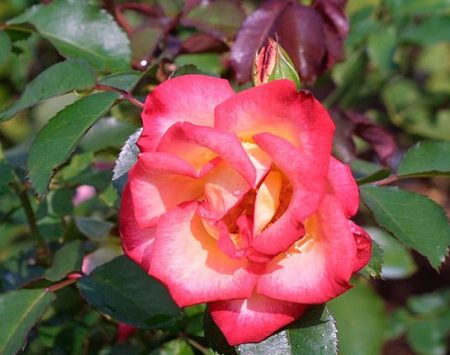
The Genus Rosa, or Rose, is well-known for its vivid hues, alluring scent, and cultural importance. Technically referred to as “prickles,” their protecting prickles inhibit animals from nesting. The rose bush is made more visually appealing by these curving, multicolored prickles that give it a special charm. Remarkably, several types are developed to be prickle-free, making them desirable in formal gardens or situations where people are concerned about safety, particularly when children are present.
These prickles also help climbing rose varieties cling to buildings, which promotes their upward growth. These prickles may be difficult to deal with, but they are an essential part of the plant’s defense mechanism, guaranteeing its flexibility and hardiness in a range of conditions.
2. Aloe vera
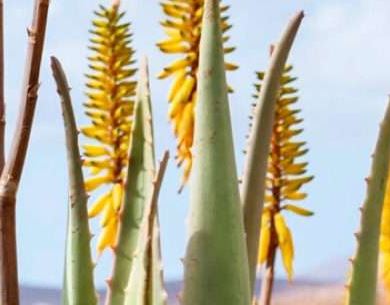
Aloe vera is a well-known succulent with long, spiky, vase-shaped leaves. Its sharp spikes not only act as a defense mechanism but also make it suitable for use as a safety fence. This versatile plant offers various medicinal, culinary, and cosmetic benefits, making it a valuable addition to any garden.
3. Holly Plants

Holly plants, like the common holly (Ilex aquifolium), are evergreen and known for their spiky, green leaves. Often associated with Christmas, they produce small berries that serve as a food source for wildlife and attract bees and other pollinators. While they resemble the Oregon grape holly (Mahonia aquifolium), they belong to different plant families.
4. Flowering Quince
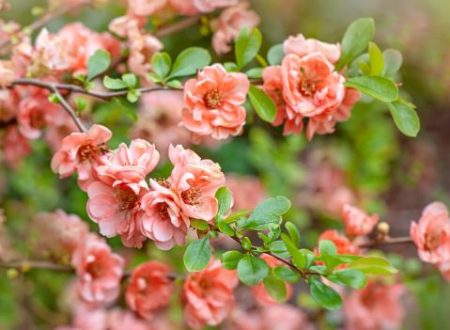
The flowering quince is a thorny shrub resembling roses. It features shades of red, orange, pink, and white flowers against glossy dark green foliage. The shrub produces small 2-inch flowers on its gray-brown twigs, which eventually give way to yellow fruit. With a slow growth rate, it typically reaches a mature height of 6 to 10 feet.
5. Porcupine Tomato (Solanum pyracantha)

The Solanaceae family contains the unusual Porcupine Tomato (Solanum pyracantha), commonly referred to as the Devil’s Thorn, which is indigenous to Madagascar. Its vivid orange spines, which cover its stems, leaves, and undersides, give it a distinctive appearance like to a porcupine. Small, spherical, yellow berries, violet or purple star-shaped flowers, and dark green, deeply veined leaves all contribute to the plant’s visual appeal.
But because of how fiercely prickly it is, it can be difficult to manage and even invasive in some places, so casual gardeners should avoid it. It is not advisable to place this plant in areas where children or dogs may be present because all of its parts are toxic if consumed.
6. Oregon Grape (Mahonia aquifolium)
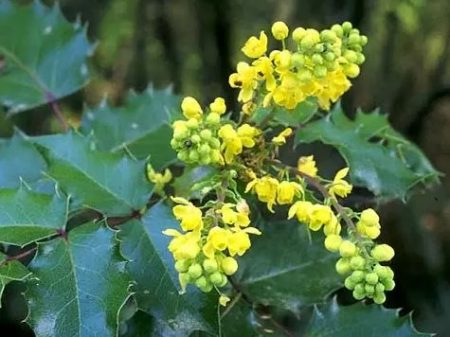
Native to western North America, Oregon Grape (Mahonia aquifolium), often called holly-leaved barberry, is a flowering plant belonging to the Berberidaceae family. Its jagged, pointy leaves, which resemble holly, serve as a deterrent to animals, protecting the plant. This hardy, shade-tolerant, and drought-resistant evergreen shrub grows 3 to 6 feet tall on average and is low maintenance, making it a great choice for landscaping under trees or in shady places.
It produces vivid yellow blossoms in the early spring, which are followed by tart, palatable, dark blue berries that are frequently used to make jellies, wines, or other drinks. Furthermore, the plant’s roots contain berberine, a yellow substance with antibacterial, anti-inflammatory, and bile-stimulating actions. However, because of possible adverse effects, caution is urged when using berberine.
7. Ocotillo (Fouquieria splendens)
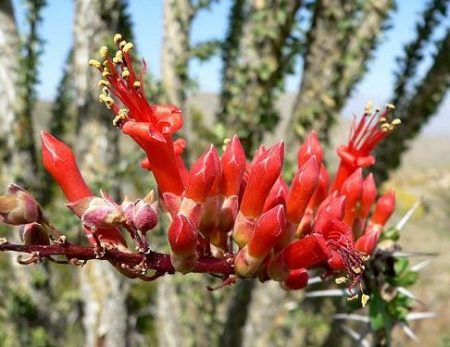
The unique plant known as ocotillo (Fouquieria splendens), sometimes referred to as coachwhip, candlewood, or Jacob’s staff, is indigenous to the deserts of northern Mexico and the Southwestern United States. It has long, slender, spiny, unbranched stems that can grow up to 20 feet tall. Sharp, robust thorns that can reach a length of two inches are ornamented on the stems, which act as a visual attraction and a barrier against herbivores. Little green leaves emerge quickly after rainfall, transforming the plant into a drought-deciduous one that loses leaves during dry spells to conserve water.
From March to June, the plant produces bright, flame-colored flowers at the tips of its stems, which draw hummingbirds for pollination. Ocotillo is a popular choice for xeriscaping because of its prickly nature and adaptability to different moisture levels; nonetheless, careful placement is required in gardens.
8. Honey Locust (Gleditsia)
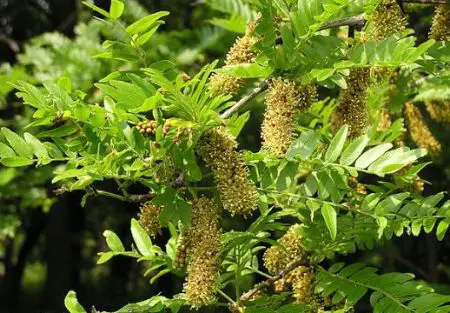
Central America is home to the deciduous Honey Locust (Gleditsia triacanthos), a member of the legume (Fabaceae) family. It is well-known for being adaptable because it can flourish in a variety of soil types and climates, which makes it common in urban settings. Large, branching thorns that may grow up to 30 cm (12 inches) in length are its defining characteristic. They serve as a powerful deterrent to herbivores and are even utilized as nails.
Thorns are more frequent on younger trees but less common as the tree gets older. For aesthetic purposes, thornless cultivars such as ‘Shademaster’ and ‘Sunburst’ have been created, providing the advantages of the tree without the risk of thorns. Aside from its prickly thorns, the Honey Locust is known for its delicious, legume-like pods, which have been eaten by a variety of wildlife species and traditionally utilized as a food source by Native Americans and early settlers.
9. Giant Rhubarb (Gunnera manicata)
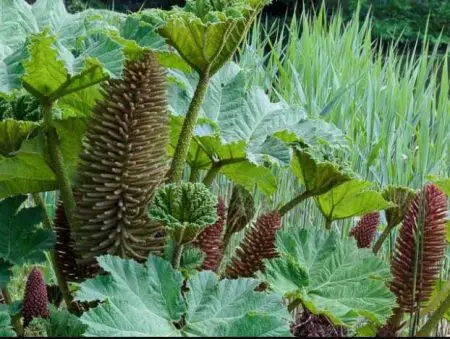
Native to the Serra do Mar highlands of southeast Brazil, Giant Rhubarb (Gunnera manicata), sometimes referred to as Dinosaur Food, is a flowering plant belonging to the Gunneraceae family. Despite having nothing to do with the edible rhubarb, its common name comes from its big, rhubarb-like leaves. As a defensive mechanism against herbivores, the plant is distinguished by spiky, thorn-like protrusions on its stems and underside of the leaves.
The plant is dubbed “Dinosaur Food” because of its large size, which includes mature leaves that can grow up to 8 feet tall and 10 feet in circumference, giving it a prehistoric aspect. It also has little reddish-green flowers on upright spikes that resemble umbrellas, and it is usually found in garden settings next to ponds or streams.
10. Silverthorn (Elaeagnus pungens)
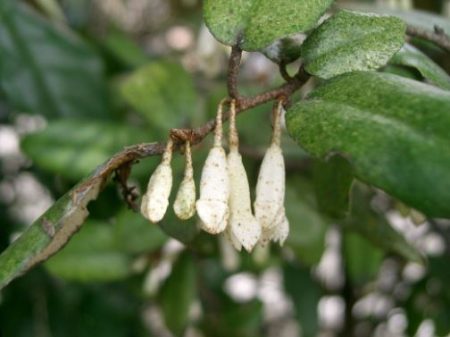
The hardy evergreen shrub known as silverthorn (Elaeagnus pungens), sometimes called Thorny Elaeagnus or Thorny Olive, is native to China and Japan. Often utilized as windbreaks and hedges, it thrives in poor soils and coastal environments. Tough foliage hides its jagged thorns, which serve as climbing and defense mechanisms.
Its attractive qualities notwithstanding, it can be invasive, so exercise caution while planting. Silverthorn is renowned for its small edible fruits, fragrant blossoms, and silvery-green leaves, which provide a pleasant scent in the fall and winter, in addition to its thorns.
11. Californian Fuchsia (Epilobium canum)
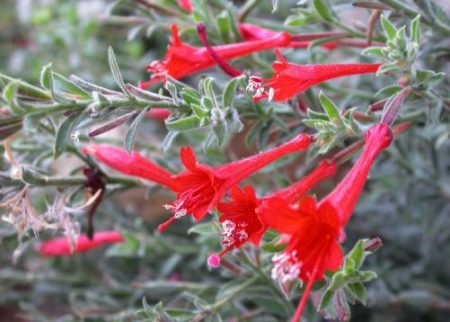
Native to western North America, Californian Fuchsia (Epilobium canum), also called Zauschneria or Hummingbird Trumpet, is a low-growing, perennial sub-shrub that is semi-evergreen. It has slender, velvety leaves and nectar-rich flowers that are perfect for hummingbirds, shielded from the elements by thorny stalks. This low-maintenance plant is ideal for raised beds and rock gardens in the southern United States since it grows well in sandy, well-drained soils and can withstand droughts once established.
12. Blackthorn (Prunus Spinosa)
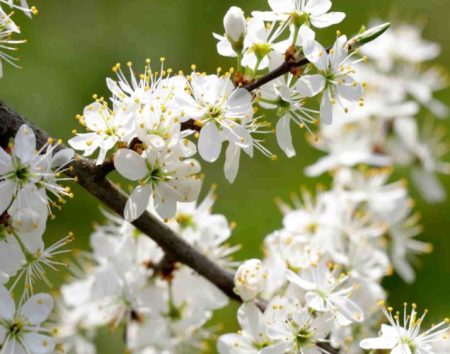
Prunus spinosa, or blackthorn, is a popular choice for hedges because of its strong thorns and dense growth. It is often referred to as “slee,” or blackthorn. It is a native of Europe, western Asia, and northwest Africa. It is well-known for its strong, long thorns, which are capable of puncturing car tires and offer good hedge for livestock as well as habitats for wildlife. The plant is an important element in many landscapes because of its resilience, capacity to grow in hard environments, and historical and folkloric associations.
13. Osage Orange (Maclura pomifera)
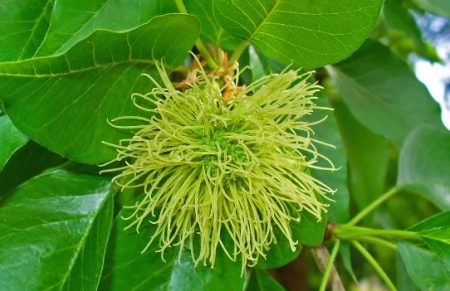
The Osage Orange (Maclura pomifera), sometimes referred to as the horse apple, bodark, or hedge apple, is a deciduous tree that is native to South and Central America in North America. Known for its big, rough green fruit and strong wood, it has long been used to make fence posts and bows. It is a popular choice for hedges because of its thorns, which are present on branches and young twigs and act as an excellent defensive mechanism. The plant offers both security and aesthetic appeal. The tree is covered in thorns, yet it bears little, insignificant flowers in the spring and unique fruit in the fall that is widely used for arrangements, even though it is not edible.
14. Floss Silk Tree (Ceiba speciosa)
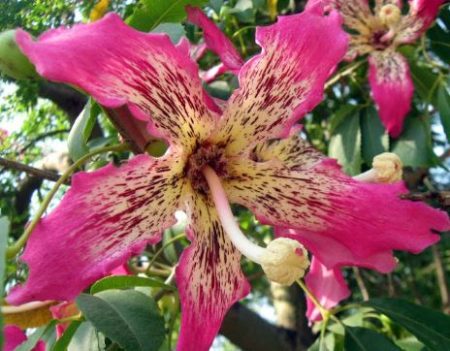
The unusual deciduous floss silk tree (Ceiba speciosa), sometimes referred to as Chorisia speciosa, is a native of South America’s tropical and subtropical woods. It is recognizable for its vivid pink blossoms and strong, prickly trunk, which serve as defense against animal grazing. The tree yields long, enormous fruits that, when cracked open, expose fluffy white strands called “floss silk.” Because of its large size and thorny nature, it is a great choice for landscapes because it is hardy and versatile and thrives in sunny circumstances and well-drained soils.
15. Kangaroo Thorn (Acacia paradoxa)

Native to Australia, Kangaroo Thorn (Acacia paradoxa), often called Paradox Acacia, is a thick plant distinguished by its sharp, hooked thorns that discourage animals from browsing. It is highly valued for its bright yellow, spherical flower clusters that bloom from late winter to spring and provide pollinators with nectar despite its defensive characteristics. Because of its resilience and adaptability, it can flourish in a variety of temperatures and soil types, making it suited for harsh situations. To stop it from spreading invasively outside of its natural range, vigilance is suggested.
16. Flame Tree (Brachychiton acerifolius)
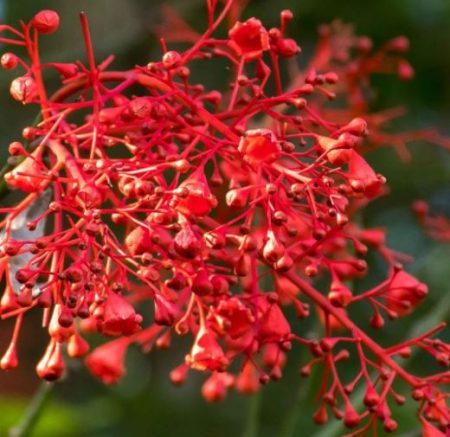
The Illawarra Flame Tree, or Flame Tree (Brachychiton acerifolius), is a well-known native Australian tree that is well-known for its vivid red blossoms. Although it has spiky or sharp protuberances or thorns, they are not as dangerous or sharp as some other plants’. Its unusual seed pods, which contain hairy, yellow seeds, add to its allure. This versatile tree is well-liked for low-water gardens and urban landscapes since it can grow in a variety of soil types and, once established, can withstand droughts.
17. Flowering Cacti (Cactaceae family)
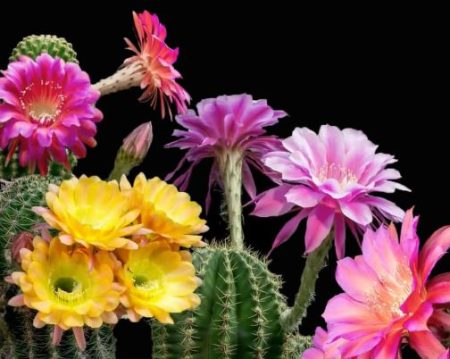
Flowering Cacti are a diversified group of plants in the Cactaceae family that are well-known for their capacity to flourish in arid climates. Their spines, which are essentially modified leaves, have two functions: they keep herbivores away and direct rainfall to the base of the plant. These cacti yield a wide range of exquisite, frequently enormous, vivid flowers that draw pollinators like birds, bats, and insects. They are popular for low-water gardening scenarios such as indoor houseplants, rock gardens, and desert landscaping due to their diverse range of forms and sizes.
18. Natal Plum (Carissa macrocarpa)

Small and evergreen, nativ to South Africa, natal plum (Carissa macrocarpa) is frequently grown as an ornamental plant in warmer regions or as a hedge. Herbivores are discouraged by its pointed, forked thorns, which call for caution when trimming. All year long, the plant produces fragrant, star-shaped white flowers. These are followed by bright red, eatable plum-like fruits that have a hint of tartness. It is a well-liked option for coastal landscaping due to its resistance to coastal environments.
19. Mexican Poppy (Argemone mexicana)
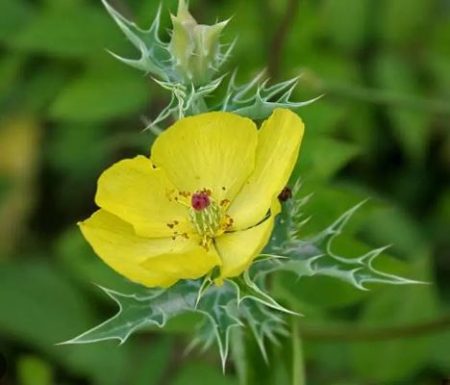
Mexican poppy (Argemone mexicana) is an annual herbaceous plant native to Mexico and the southwestern United States. It is often referred to as Mexican prickly poppy or thistle poppy. Its entire body is coated in prickles or sharp spines that act as a defense against herbivores. Its huge, vivid yellow flowers and silver-green foliage give visual appeal to gardens despite its prickly nature. But, vigilance is urged because the plant can become invasive due to its prolific seed production and because all components of the plant are hazardous if consumed.
20. Jerusalem Thorn (Parkinsonia aculeata)
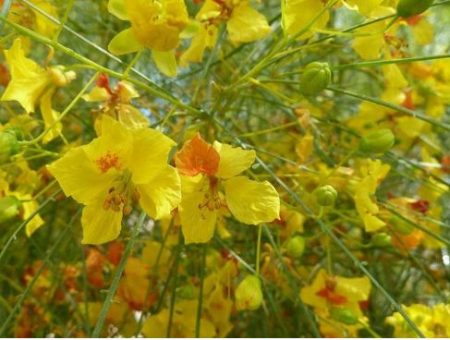
Native to the southwestern United States, Mexico, and the Caribbean, the Jerusalem Thorn (Parkinsonia aculeata) is a small deciduous tree or big shrub. It is sometimes referred to as Mexican Palo Verde or Retama. It protects against animals with strong thorns at the base of its leaves. The plant is a popular choice for low-water landscapes because of its bright green bark, feathery look, and clusters of bright yellow blooms. It can also withstand dry conditions.
21. Jujube (Ziziphus jujuba)
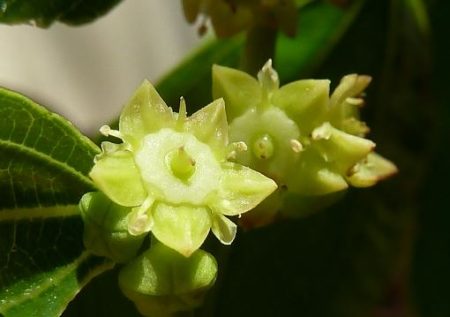
The little deciduous tree Jujube (Ziziphus jujuba) is prized for its sweet and tart fruit, which is sometimes referred to as Chinese date or red date. It is well known for its ability to withstand extreme weather, flourishing in both heat and drought. The tree produces small, round fruits that are high in vitamin C and other nutrients, as well as tiny, fragrant blooms that draw bees. The Jujube tree is a well-liked option because of its lovely characteristics and mouthwatering fruit, even with its thorns.
22. Lemon and Other Citrus Trees (Genus Citrus)
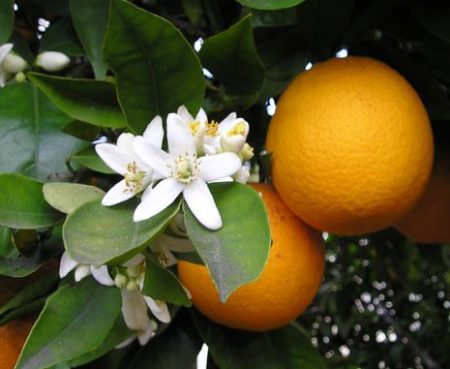
Citrus trees are evergreen shrubs and trees in the Citrus genus that are native to Asia and prized for their delicious fruit and beautiful blossoms. Popular types including lemons, oranges, grapefruits, limes, and tangerines are among them; they are farmed in warm climates all over the world for their tasty and nourishing output. These trees are prized for their colorful fruits, fragrant oils, and beautiful blossoms, which add to their allure despite their prickly appearance.
23. Acacia (Genus Acacia)
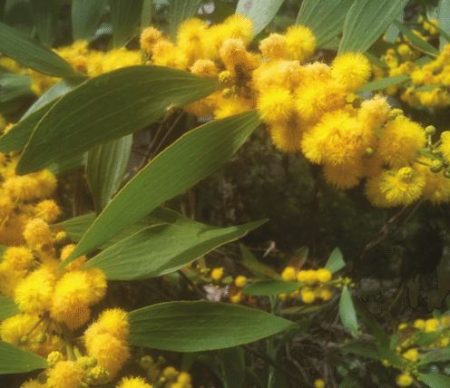
The Fabaceae family of flowering plants includes the diverse genus Acacia. It is known for its thorns, spherical yellow or white blooms, and feather-like leaves. Depending on the species, these thorns can vary in size and shape and serve as a protection against herbivores. Certain Acacia species, such as the Whistling Thorn, occasionally form a mutualistic partnership with ants, which helps the tree repel herbivores. Furthermore, Acacia trees yield gum or resin, which has been used to make ink, food, and medicine, among other things.
24. Trifoliate Orange (Poncirus trifoliata)
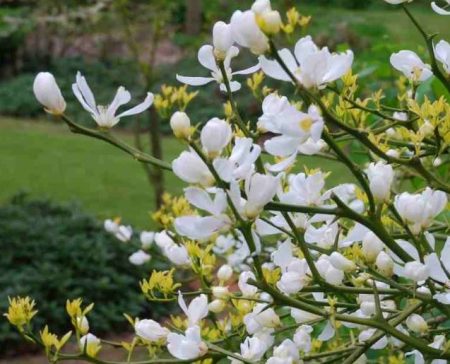
Trifoliate Orange (Poncirus trifoliata) is a hardy deciduous tree or shrub native to northern China and Korea. It is also known as the Chinese bitter orange or hardy orange. Because of its remarkable ability to withstand freezing temperatures, it is frequently used as a rootstock for grafting different citrus plants, which helps to ensure their survival throughout the hard winter months.
25. Hercules’ Club (Zanthoxylum clava-herculis)
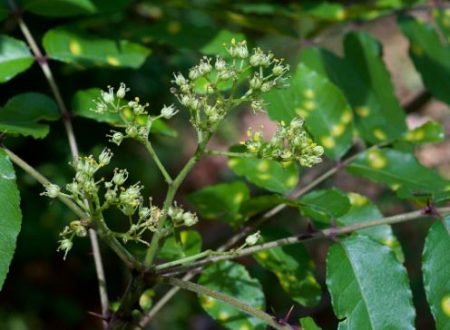
The medium-sized Hercules’ Club (Zanthoxylum clava-herculis) tree is native to the Southeast of the United States and is distinguished by its spiky bark and clusters of small blooms. Its showy, many thorns act as a defense strategy, keeping animals from consuming its bark or leaves.
26. Pyracantha (Genus Pyracantha)
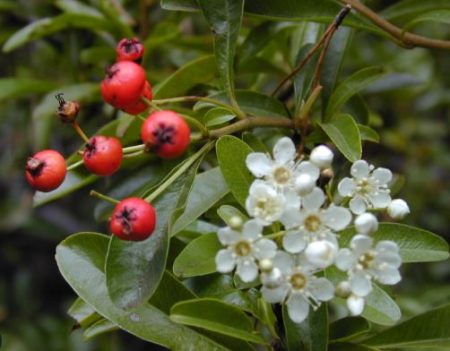
An evergreen plant endemic to areas ranging from Southwest Europe to Southeast Asia is called Pyracantha, or Firethorn. The plant protects itself from animals that might eat its pretty fruits or foliage with the help of its sharp thorns. Despite the thorns, Pyracantha is prized for its brilliant, long-lasting fruits in autumn and clusters of tiny, white blooms in spring that provide vital winter food for birds.
27. Prickly Pear Cactus (Genus Opuntia)

Belonging to the Opuntia genus, the Prickly Pear Cactus is distinguished by its edible fruit, vivid cup-shaped flowers, and paddle-shaped segments. Its spines, which are essentially modified leaves, work as a defense mechanism in arid areas, shielding the cactus from animals that are looking for water. More annoying are the detachable, hair-like spines called glochids seen on some species. Even though they are thorny, these cacti are beneficial to the environment and their fruits, called prickly pears, are frequently used in a variety of culinary applications.
28. Crown of Thorns (Euphorbia milii)
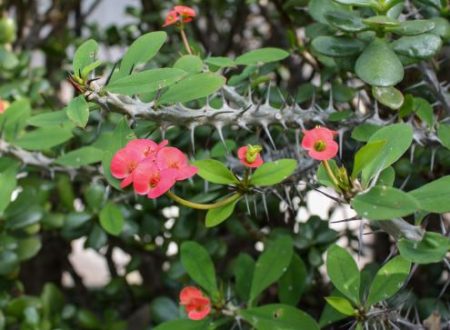
Native to Madagascar, Euphorbia milii, or the Crown of Thorns, is a stunning succulent with vivid flowers and dense, sharp spines. These spines, which are actually modified leaves, are grouped in pairs along the stems and serve as a deterrent to predators. Its vibrant blossoms, which come in a variety of colors, add to its allure as a houseplant or in xeriscaping. This plant is low-maintenance and thrives in arid climates, despite its threatening appearance.
29. Barberry (Genus Berberis)
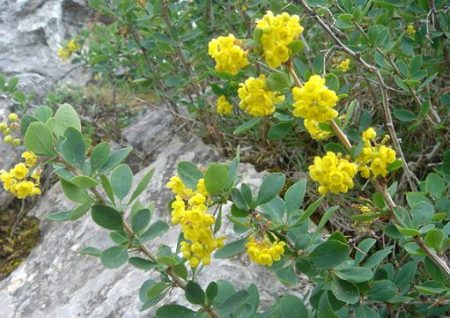
The little yellow flowers that appear in springtime on the barberry (Genus Berberis), a group of shrubs with over 500 species, are well-known, and they are followed by red or blue berries. These bushes are excellent options for hedges because of their sturdy, sharp thorns, which serve as a protection against herbivores. Furthermore, the thorns enhance the plant’s visual appeal by providing texture and intrigue, particularly throughout the fall when they acquire a scarlet hue.
30. Blackberry and Raspberry (Genus Rubus)
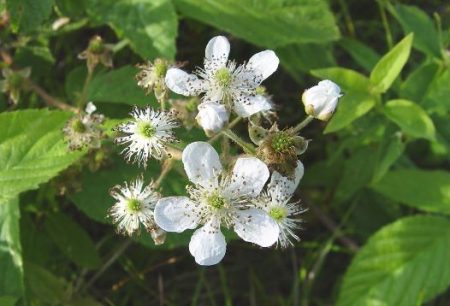
The genus Rubus, which includes blackberry and raspberry bushes, is well-known for its juicy, sweet fruits and spiky, pointed stems. As a defense strategy, these prickles that emerge from the outer layer of the plant discourage animals from eating the fruits. The tasty fruits of these plants are widely prized for their culinary applications, including jellies, jams, and pies, despite the fact that the thorns can be painful and sharp.
31. Bougainvillea (Genus Bougainvillea)
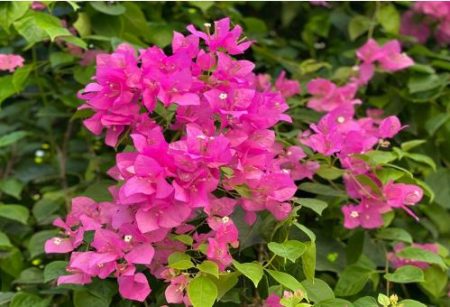
The vivid blooms and sharp spines of the bougainvillea (Genus Bougainvillea) are highly prized. These little, pointy spines act as a defense mechanism and help the plant climb; they are found along the stems of the plant. In decorative gardening, bougainvillea plants are often employed for their eye-catching, vibrant blossoms in a variety of landscaping arrangements, despite their thorny nature.
32. Hawthorns (Genus Crataegus)
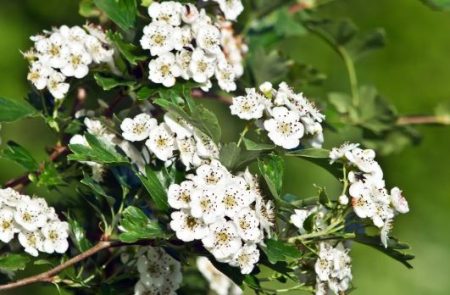
The Hawthorn (Genus Crataegus) is a small family of flowering trees or shrubs that have prickly thorns along their branches and clusters of white or pink blooms in the spring. Because of their strong thorns, which act as a defense against herbivores, they can be used to form barriers or organic fences. These thorns also increase the value of birds in the ecosystem by giving them cover and places to nest.
People Who Read This Also Read:






